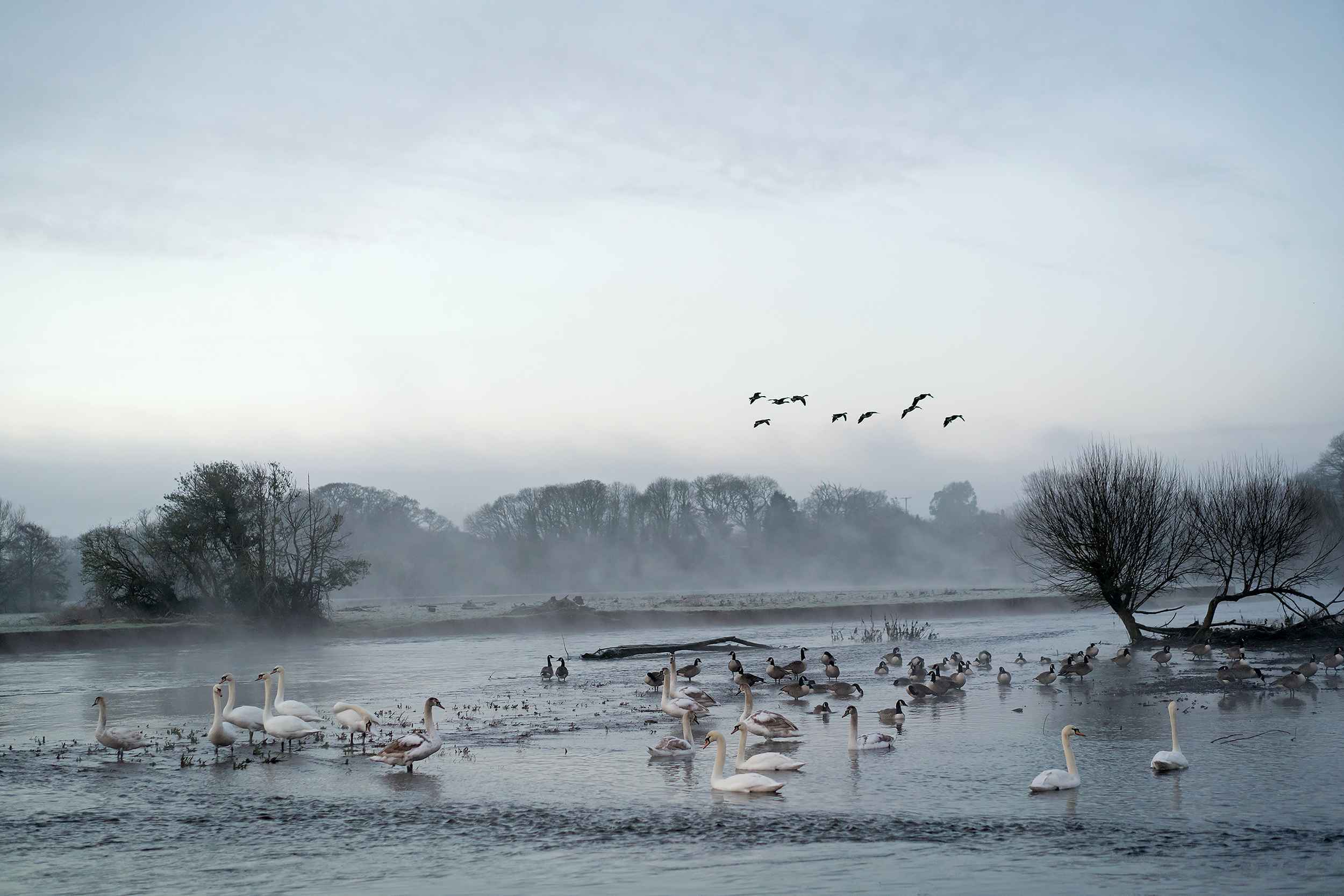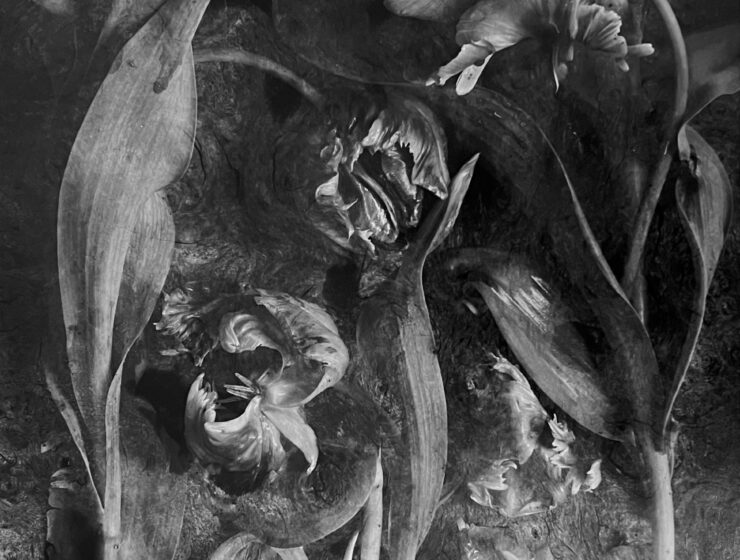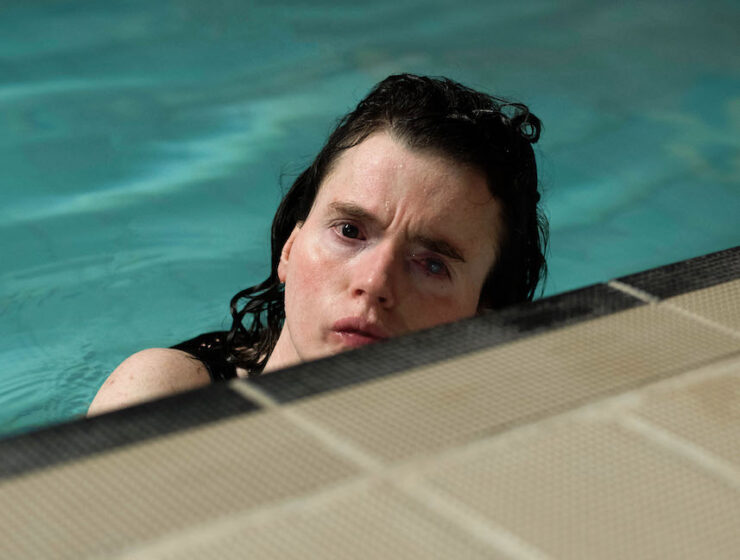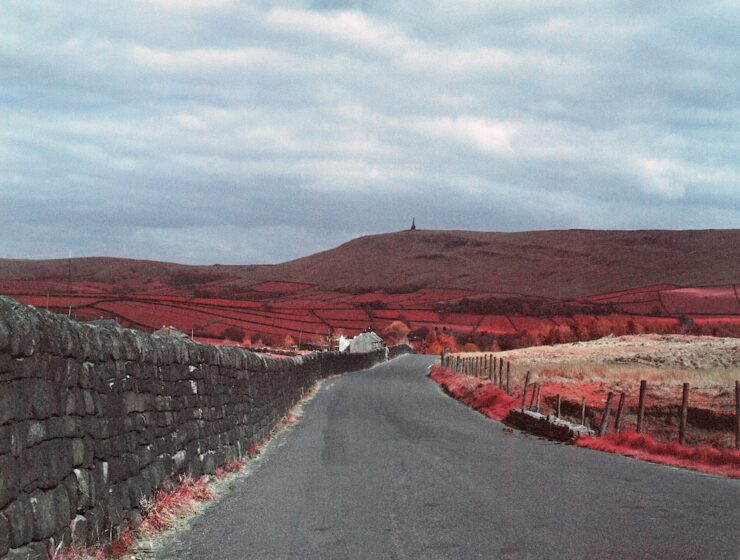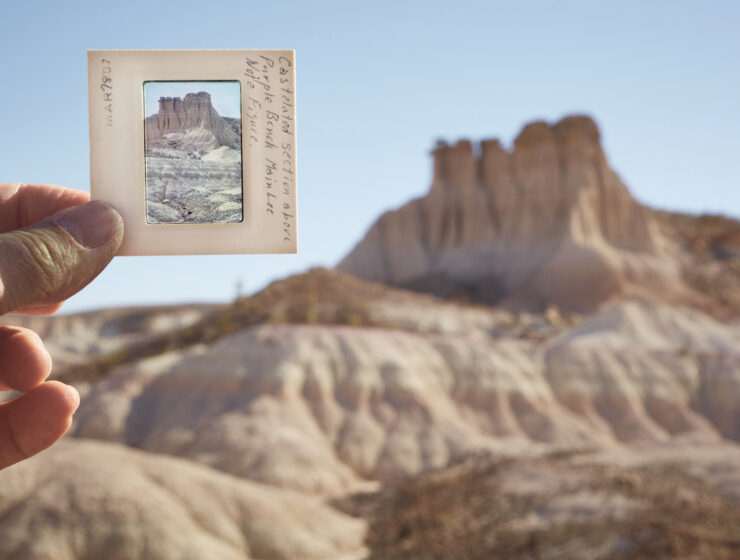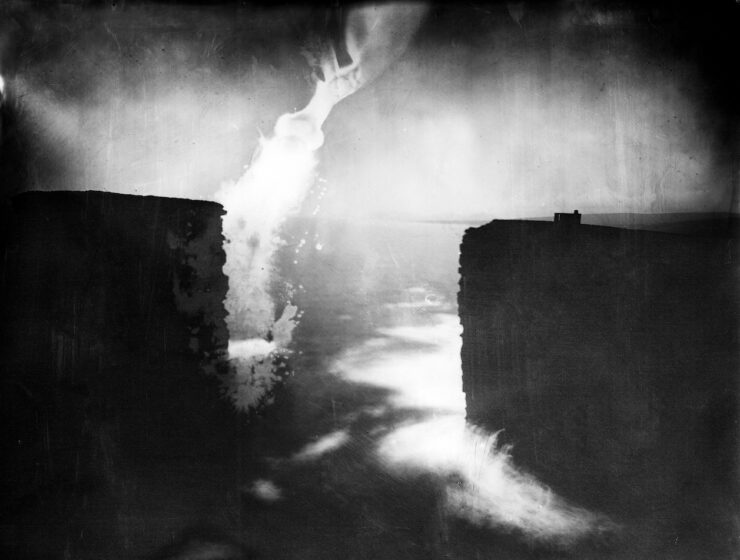Captured over the last eight winters, the images in Southam’s book and exhibition presents serene landscapes animated by the ebb and flow of a bevy of swans
“In the middle of a December night a few years ago, I was woken by the phone ringing downstairs,” Jem Southam writes in his new book, Four Winters. His brother, he was told, was in hospital, and the prognosis was not good. Southam drove to see him, and sat with him through the early hours. By late morning, his brother had pulled through. When Southam finally left the hospital, he went to walk by the River Exe, letting the fraught events of the night settle and percolate as he watched the sky, the trees, the water. As he stared at the river, a couple of ducks swam by, and he picked up his camera to take a picture.
“It was nothing special,” he writes, “just a moment in the life of the river, but it had helped calm me down, and as I walked back along the riverbank in the dark, appreciating all the gifts my brother’s life had thus far given me, I decided to return to the same spot, at dusk, for the rest of the winter, and wait until something presented itself to me to photograph.”
So began a project that has, to date, lasted eight years. Every winter, Southam returned to the Exe 40 or 50 times at dawn or dusk. He photographed the procession of birds and the gathering of darkness or dawn light; swans taking flight or at rest on the river’s eddies and flows, lit by the milky light of the moon, a star or two still glimmering overhead. He captured the cool of the water; the quiet sculptures of the trees; the pinks and purples and greys of the sky; the Devon mizzle, with every droplet in the damp air diffusing light.
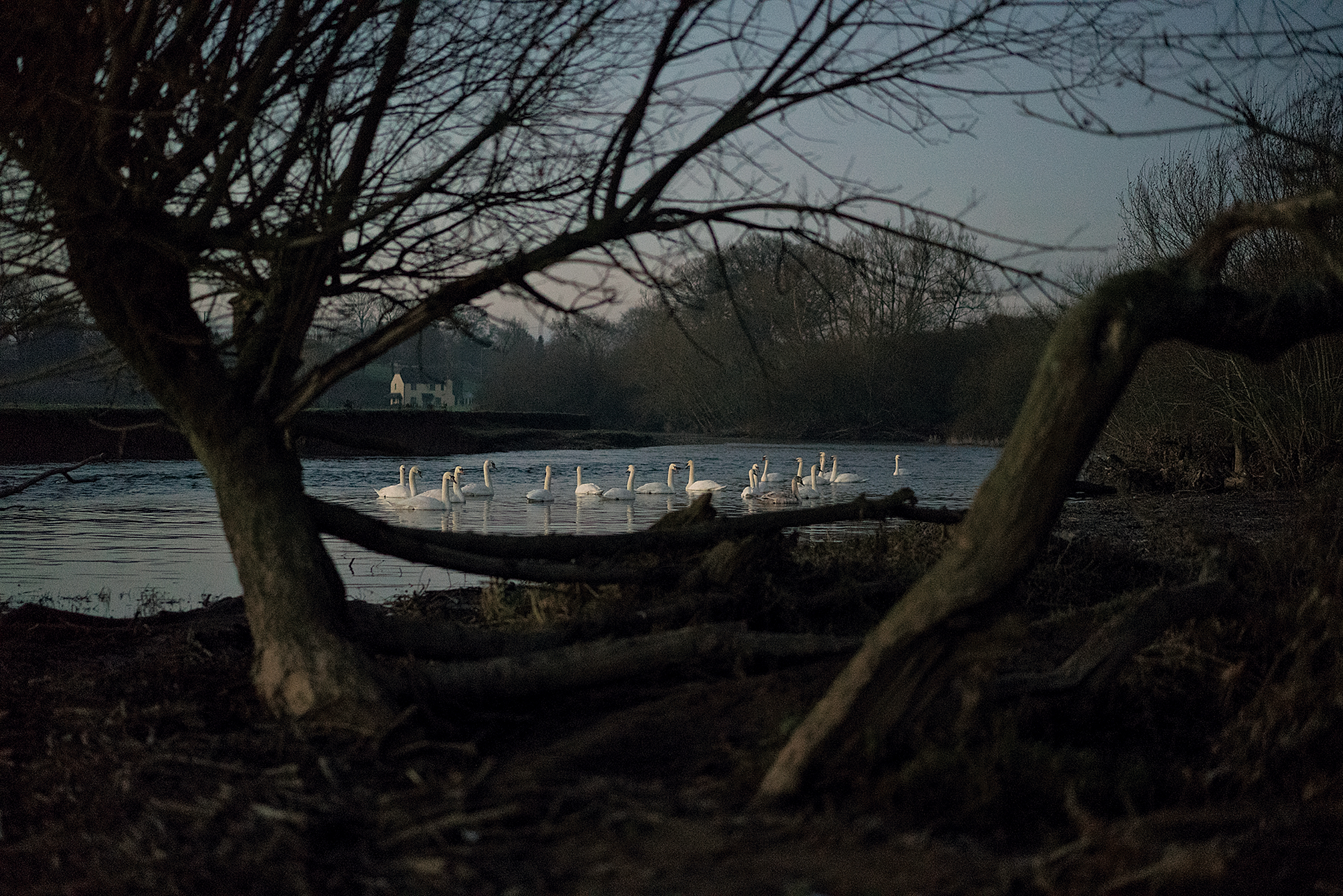
Southam’s process is intuitive. “Somehow or other I form a connection with a site; a relationship,” he explains. “I don’t go looking. I wait for something to capture my interest, and I make a picture of it. Then I go back and I usually take another picture. If that second picture starts doing something, I say to myself, ‘OK, I’ve got a little piece of work here’.” He is guided by happenstance, allowing a work to dictate itself to him as he follows its narrative. In the case of this winter work, he kept a close eye on the Met Office and the reports of the Exe’s water level, setting an alarm for an hour before dawn on the chosen morning, going down in the dark to photograph, and heading home in time for breakfast. “How one brief moment can lead to eight years of complete obsession and preoccupation is extraordinary,” he reflects. “With no planning. You just do something, and something unfolds.
Another aspect of this work’s method, also dictated by circumstance, was the use of digital technology – a major departure for Southam, a landscape photographer known for his work with a 10×8 camera. He had bought a Sony camera out of curiosity, but a headlong fall downstairs and a broken arm meant that wielding the heft of the 10×8 was no longer possible. The Sony was light, and he could use it one-handed.
The sight through the ground glass under the curtain of the large format camera was – and is – precious to Southam; an invigorating, challenging experience. “Now it’s another excitement,” he says of his new tools. “I’m dealing with the fluidity of the world: the light, the movement, the birds, the water. I don’t look through the viewfinder; I’m looking at the back, and trying to make pictures in this flow of time.” In almost complete darkness, at ISO 10000, he can make exposures of a third of a second that capture the moonlight tipping the ripples on the river’s surface.
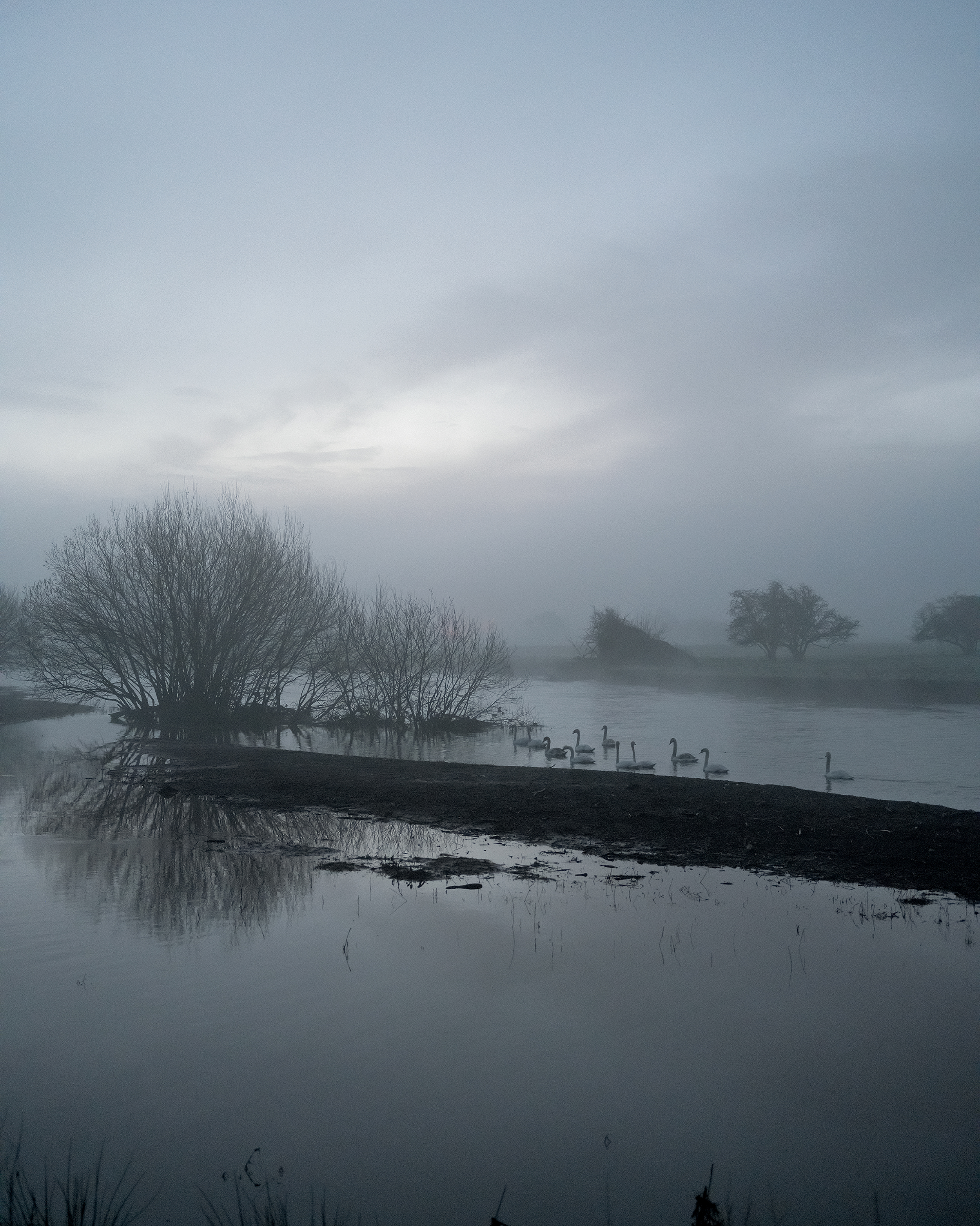
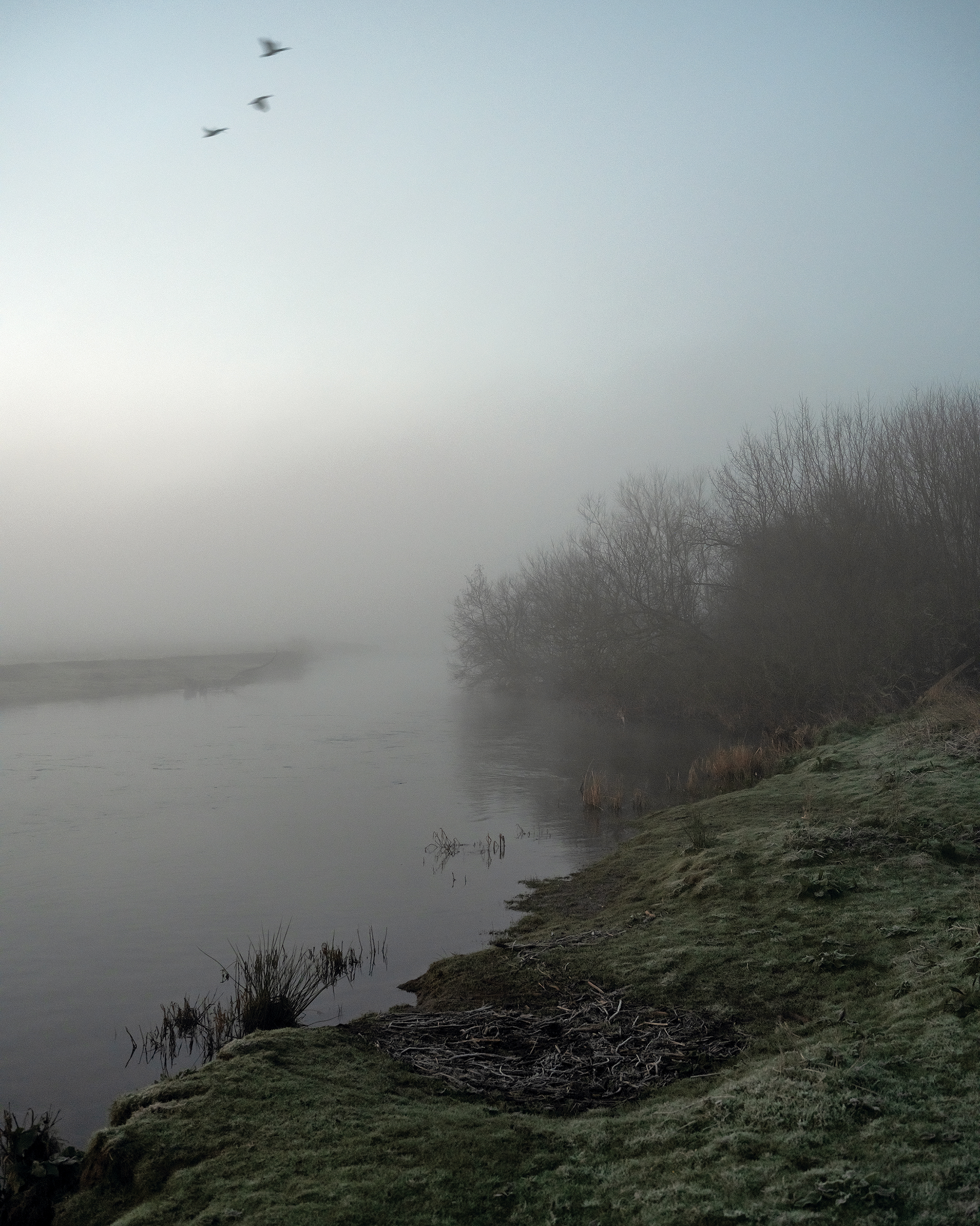
Four Winters, published by Stanley/Barker, is not the complete work, Southam says from his kitchen in Exeter. Rather, it contains images from four different series. As each winter is different, the photographer finds a new methodology every year. The four winters of the book’s title – ‘Swan Winter’, ‘The Wintry Heavens’, ‘Forty Dawns’ and ‘The Flooded Pool’ – each have a slightly different focus, from the flight of the swans, to the celestial bodies overseeing the scene, and the mirror-like surface of the pool created by the river’s bend.
Southam’s current show at Huxley-Parlour Gallery, London, titled The Seventh Winter, displays a selection of photographs made last year, when the photographer changed again from using a Sony camera to a Fuji. This shift, Southam says, inspired “probably the most radical thing I’ve ever done in my life photographically: the decision to turn the camera through 90 degrees.” On the gallery wall, the newer portrait pictures seem to glow, floating in dark-wood frames. The character of these vertical images is distinct from the four winters gathered in the book; somehow cleaner, more precise. One reason for this could be that in 2022, Southam took his ladder down to the river for the first time. The heightened vista and larger view of the foreground seem to marry Southam’s new digital methodology with the more formally demanding practice of his landscape photography, and the Exe looks suddenly grander, more austerely beautiful, with its now-familiar cast of swans.
Birds in flight
From the very first winter, Southam had been contemplating the potency of swans as a symbol: Tchaikovsky and the corps de ballet; Scandinavian mythos of swans depicting the sun pulled across the sky to light the day, and down to the underworld at night. “You can’t make pictures of birds with a 10×8 camera,” he says. “So to be able to suddenly make the pictures that I want to make, of places that are animated with birds, is unbelievably exciting.” Finally he is able to populate the landscapes like the great landscape artists of the past – from Claude Lorrain to John Constable – always did: “I’m animating the landscape in a way I’d never dreamed I would be able to do.”
Birds are, after all, a family preoccupation. Southam’s father was a keen birder, as is his brother, Math. They both possess a preternatural interest and knowledge of their movement and song, and the particular conditions that lead to their appearance at a given time and place. “I’ve made about four or five different pieces of work about birds,” Southam tells me. “This is the only one that anybody’s ever seen.”
is the only one that anybody’s ever seen.” Like his father and brother, Southam tracks birds’ behaviour, patiently attuning himself to their rhythms. “Although I will never be able to understand how a bird’s mind works or perceives, I do feel a kind of kinship with them when I’m down there,” he says. “Although I’m a stranger, and I slightly keep my distance, I feel we’re sharing something; we’re sharing this new morning together. Which is a comforting thought for me.”
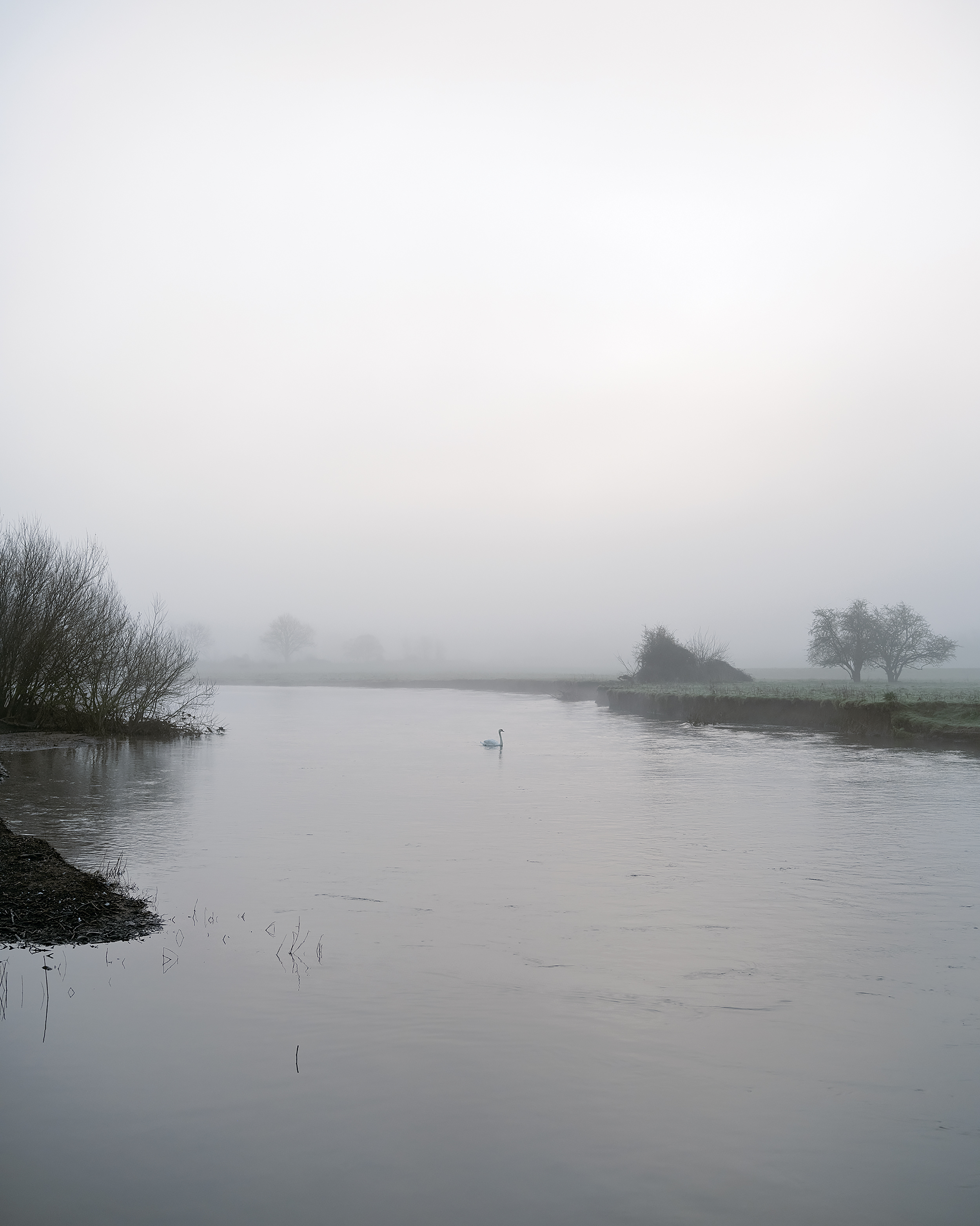
The photographer’s youngest brother, Andy, is present in the work. His hospitalisation precipitated the whole project, and the book is dedicated to him. Two years after that morning when Andy was first admitted, Southam received another fateful early-morning call, and he drove to the hospital. This time, though, his brother passed away. “My brother was an extraordinary guy,” Southam remembers. Andy, who was born with brain damage, lived at his parents’ home all his life as part of a loving family. Working on a farm through his teenage years, he established a remarkable kinship with the cows that led to his later taking up a position at a zoo, and finding his life’s work as an elephant keeper.
“People used to feel sorry for him,” Southam says, his voice breaking as the light dims behind him, “but he was so rich, what he gave us.” He had grown very close to his brother in the last 15 years of Andy’s life. “Without him, I wouldn’t have made this work. He’s in my mind an awful lot, whenever I’m down there.
“The work, then, contains two things,” he continues. “One is a sense of loss: thinking about his life, and what he meant to me. The other thing is hope. Each morning we all wake up, wherever we are on Earth, whatever’s happening to us – you just hope maybe today will be a bit better.”
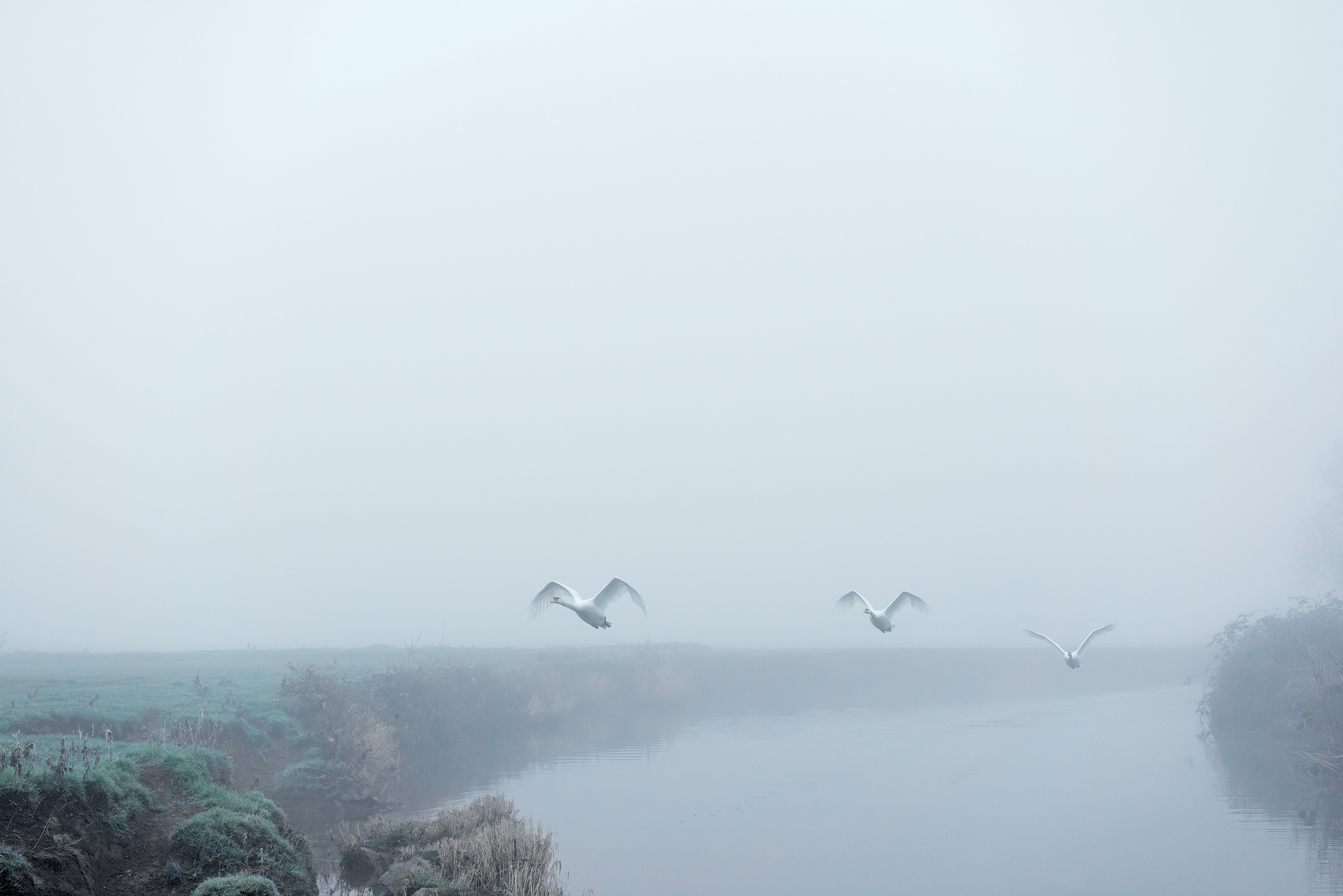
Informed by winter and water and family loss, the photographs reflect Southam’s own life moment too. “This work is the work of an old man,” he reflects. “It’s about hope and loss, but it’s also very much about an old man contemplating his place in the universe. And beginning to come to terms with the fact that, slowly, ‘me’ is winding down. How many more springs or winters am I going to be here to make these pictures? Not that many. So it’s about contemplating life, my own mortality, as well.”
The swans will continue to settle and ascend, the light will continue to lift and fade. “It’s about celebrating the fact that I can be here, that I’m taking all of this in. That all of this is available to us, that the world is such an absolutely, staggeringly extraordinary place to spend some time. We’re so lucky, as humans. Not all of us,” he concedes, “but potentially, if we’re fortunate.” The room behind him has faded to black. He stands, turns and switches on a light.
Four Winters by Jem Southam is out now (Stanley/Barker)
The Seventh Winter is on show at Huxley-Parlour, London, until 4 March

